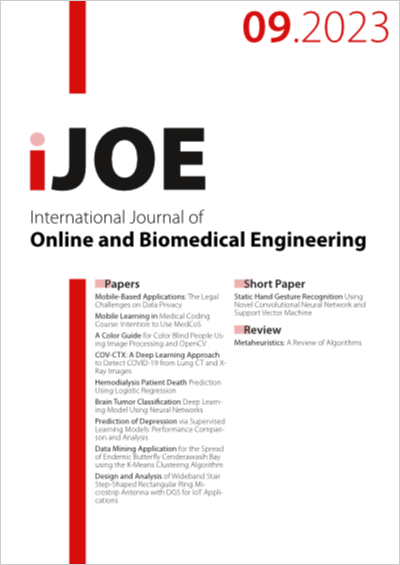Data Mining Application for the Spread of Endemic Butterfly Cenderawasih Bay using the K-Means Clustering Algorithm
DOI:
https://doi.org/10.3991/ijoe.v19i09.40907Keywords:
Papilionoidea, butterfly, Cendrawasih Bay Island, K-Means ClusteringAbstract
The superfamily Papilionoidea day butterfly, which is endemic to the Cenderawasih Bay islands (Numfor, Supiori, Biak and Yapen), consists of 6 family species: the Papilionidae, Hesperiidae, Pieridae, Riodinidae, Lycaenidae and Nymphalidae families. This study aims to analyze the grouping of endemic butterflies of the Bay of Cendrawasih based on wings and colours in 4 Clusters, namely Numfor, Supiori, Biak and Yapen Islands, by applying the function of the K-Means Clustering algorithm data mining method. The grouping selection was carried out 7 times with the conclusion that Numfor had 13 types of Endemic Butterfly species, Biak had 7 Papuan Endemic Butterfly Species, Supiori had 9 Endemic Butterfly Species, and Yapen had 11 Endemic Butterfly Species. The analysis results were then retested in an application built using the Waterfall system development method and the PHP and MySQL programming languages. In addition to applying the K-Means Clustering algorithm for grouping endemic butterflies, the application created produces a butterfly distribution map that displays butterfly information based on family.
Downloads
Published
How to Cite
Issue
Section
License
Copyright (c) 2023 Fegie Y. Wattimena, Abilliyo S. Mampioper , Reni Koibur, I. Nyoman G. A. Astawa , Dony Novaliendry, Noper Ardi, Nenny Mahyuddin

This work is licensed under a Creative Commons Attribution 4.0 International License.



